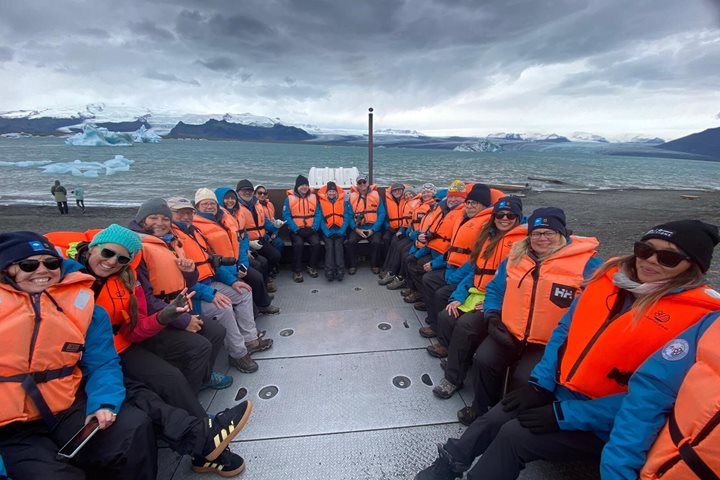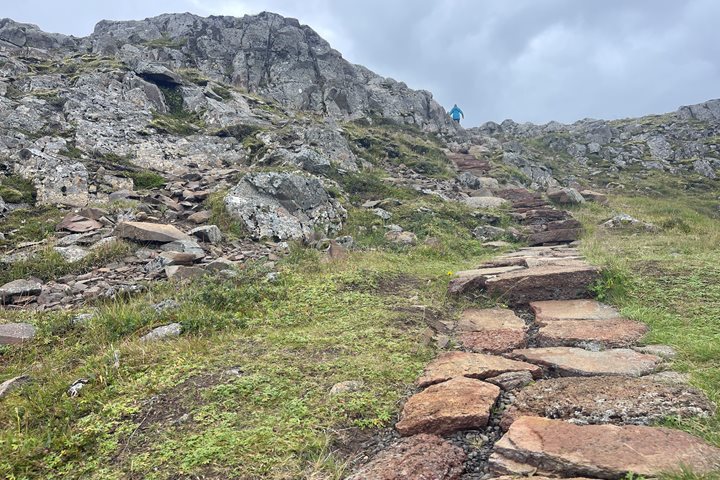My hand stings with cold as the icy water drips down my fingers. I am holding a rare and beautiful gem, an ice diamond. This transient jewel was plucked from Jökulsárlón, the glacial lagoon on Iceland’s south east coast. The small drips on my thumb are but small echoes of the larger flow from the Breidamerkurjökull glacier whose water and icebergs exit through the lagoon and on to the sea.
On Monday 18 July, the guests and crew of National Geographic Explorer departed from Djúpivogur by motor coach and traveled the southern ring road to Jökulsárlón. With local tour operators as our guides, we boarded an amphibious boat to cruise the lagoon experienced the aquamarine glow of icebergs from a closer vantage point. Many of the icebergs showed dramatic contrast with layers of black volcanic ash embedded in the ice. These ash layers have helped scientist date the thousand year old ice.
Our guides spoke to the dramatic changes in the glacier that have occurred in the last 20, 50 and 100 years. As the local and global climate warms, the glacier is retreating higher into the mountains, combined with deflation (thinning) of the glacier size of the lagoon is rapidly increasing.
Following the lagoon tour we crossed the mouth of the river and visited the black sand beach–a photographers dream. Here the sparkling ice meets the Atlantic where the warm salt water and waves accelerate the melt.
As one of the Grosvenor fellows traveling with this expedition, I look forward to sharing this firsthand account of this dramatic landscape with my classes this fall.
One of the many contrasting landscapes we experienced included the ascent to the top of the Vatnajökull ice cap. Many of us climbed into super Jeeps and vans outfitted with excessively large tires to trek 800 meters up a steep, winding dirt road, to our next stop where we exchanged transportation for snowmobiles and snow-cats. As the incline increased our terrain changed from rock to ice and we found ourselves amongst the clouds. On the way to our pinnacle in this raw, barren land we saw ‘pink ice,’ and crevasses in the snow demonstrating further contrasts in nature. Shortly after arriving at our final destination more than 1000 meters above sea level the fog dissipated revealing a more jagged landscape nicknamed the ‘Christmas Village’.
Today we were able to witness a primary example of climate change from two distinct perspectives. The glacier that once covered the entire mountain is now flowing into the ocean as icebergs. As a Grosvenor Teacher Fellow, the ability to describe this scene to my students will certainly increase their ability to understand the situation, but also to connect on a deeper, emotional level. The more time I spend in the field the more I find myself inspired by my surroundings. Connecting nature with personal feeling will certainly influence my student’s creativity as we develop an artistic response to the world around us.






